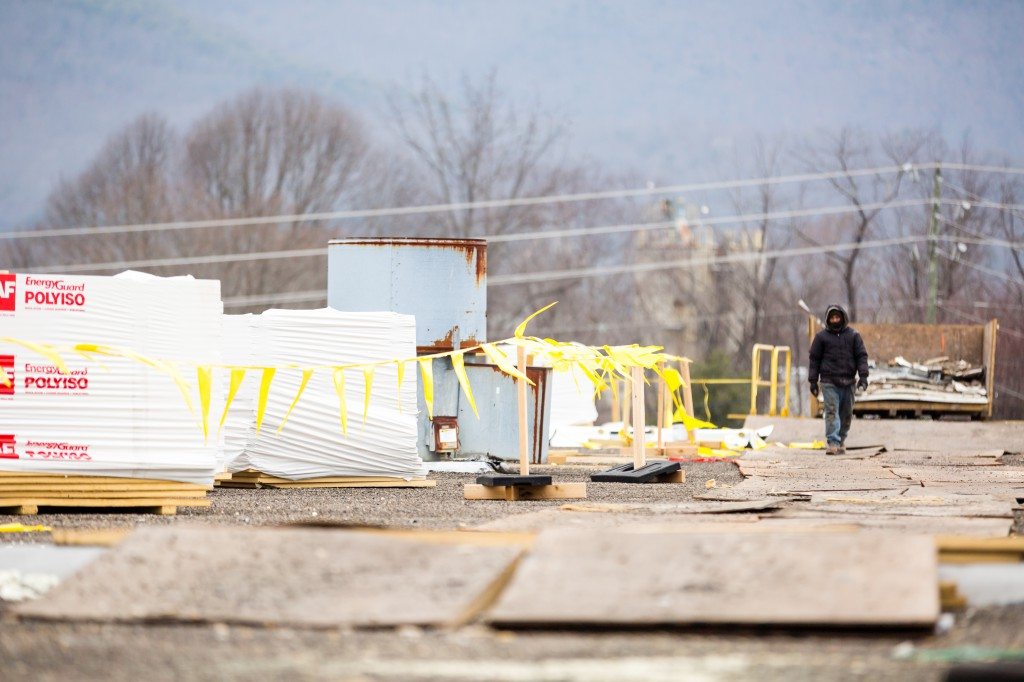Taking advantage of the seasonality of the roofing industry
It’s a pretty well known fact that the easiest time to replace a roof is when the weather is perfect – sun is shining and there is no impending threat of rain. It’s really just common sense. Similar to any company in the construction industry, roofing is easier to install typically from early spring to late fall. However, with the advent of new technologies and programs offered by nationwide contractors, the seasonality of roofing can sometimes include the winter months.
What to consider for roofing in the winter months
Typically roofing systems are a project better handled in the spring to fall months, but winter roofing projects can be undertaken during the winter as long as you and your roofing contractor recognize the limitations and challenges associated with these types of installations. Here are a few things to consider based on where your facility is located:
- Southern/Western U.S. – For the southern and western parts of the U.S., roofing in the winter is seldom a problem as the weather is pretty consistent in all seasons. In these areas, some of the most cost effective prices for roofing systems can be found. Since roofing crews are limited to the amount of work they can do in other parts of the country, the availability of crews can be to the advantage to these roofing projects. Additionally, when roofing crews don’t have to travel across the country to go from job to job, the cost savings is typically passed down to the customer allowing them to take advantage of roofing project efficiencies.
- Mid-Atlantic /Midwest U.S. – In the Mid-Atlantic and Midwest states, weather conditions can often times be unpredictable. Roofing systems for these areas during the winter months have many factors to consider. Roof replacements that involve simple re-skins or single-ply tear offs are the best to do when temperatures are on the decline. These types of systems allow for rapid removal of existing material and easier tie-ins at the end of the day in case inclement weather rolls in overnight. Built up roof tear offs or multiple roof tear offs can be slow and can have difficult tie-ins. EPDM roofs are also a better fit for colder installs simply because they can heat up and melt off any ice or frost faster than the white TPO or PVC roofing materials. Fully adhered roofing systems can only be installed when temperatures are above freezing and materials must be stored inside to avoid poor adhesion. Ballasted roofs can only be removed or placed when the ballast contains no icing. Ice will likely stall a project as the surfaces must be clean and dry. Mechanically attached TPO and PVC roofs can be installed in lower temperatures. However, when the materials are installed in colder temperatures, thermal expansion will occur when the membrane warms, causing some cosmetic wrinkles in the membrane. These will dissipate as the membrane normalizes and it may take up to 2 years to completely tighten up. If a quality and safely-installed project may be jeopardized due to extended inclement weather, good nationwide contractors, like North American Roofing can offer to complete a portion of your roof, secure the roof and related materials, and shut the project down until early spring when they can return to complete the project.
- Northeast/Upper Midwest U.S. – In the Northeast and Upper Midwest states, temperatures can drop dramatically and snow and ice can accumulate quickly. For roofing projects in these areas, it is recommended to contract a portion of the roof to be completed prior to the worst weather conditions rolling in and have the remainder completed in the spring. In addition, nationwide contractors like North American Roofing can offer programs that will allow you to contract your new roof replacement in the fall and hold the pricing until spring. In addition, they can provide within the contracted project, roof repair work to make sure your facility is less likely to experience active leaks until your roof replacement project is started in the spring. This keeps your costs in line and lets you realize savings from year over year price increases. For projects in these areas, it is also imperative to have a fall inspection and maintenance performed to catch any problem areas prior to snow and ice accumulating as well as an established snow removal plan as snow loads can quickly damage a roof.
Overall, the ability to take on these types of projects rests with the roofing contractor you choose. With North American Roofing, we provide a collaborative approach to planning your roofing project. We work to understand the complexities of every roofing design and to provide the best solution – no matter what the season or the location. Contact us today to learn about the great programs we have available to lock in your winter project.

